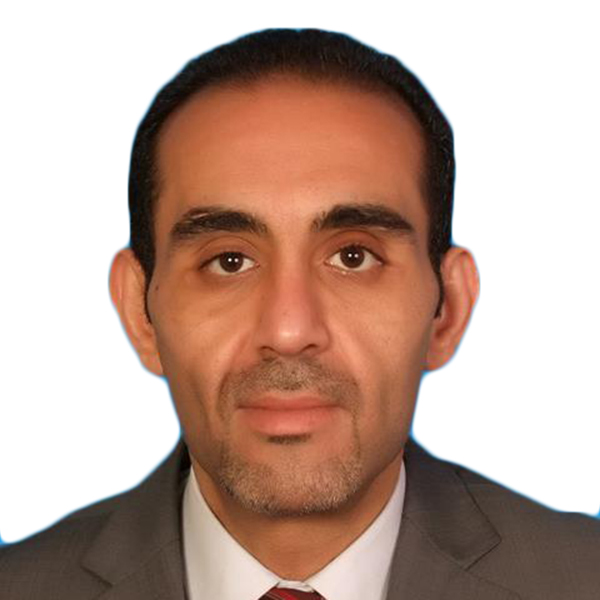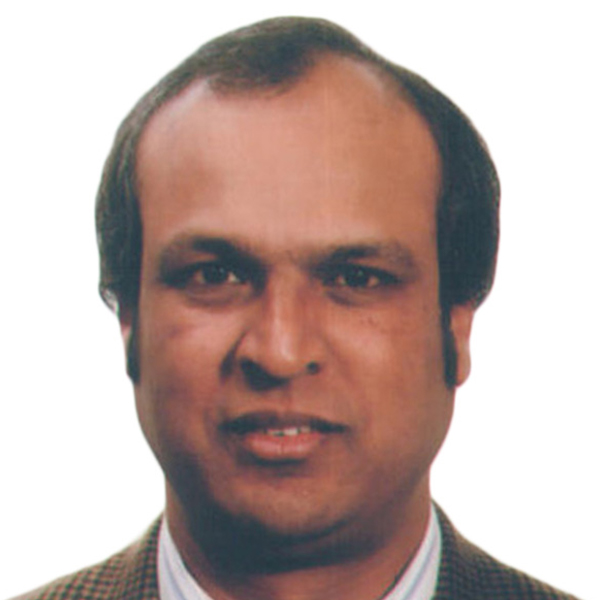Timeline for applying for a Green Card after your H1B visa?
Learn about the timeline for applying for a Green Card after holding an H1B visa.
The H-1B US Work Visa is for skilled foreign workers with Specialty Occupations, as well as Fashion Models.
Up to 85,000 skilled foreign workers receive an H-1B US Work Visa each year, with most being issued for sponsored employment in the technology, engineering, accounting, finance, healthcare and education sectors.
This is one of the most sought-after US Work Visas, mainly because the H-1B Visa is initially valid for up to 3 years, it can be renewed for up to 3 additional years, and there is an option to apply for a United States Permanent Resident Green Card.
This guide will give you the essential information about when and how you can apply for a Green Card after H1B status is coming to an end.
Table of Contents
What Is the H-1B US Work Visa?
The H-1B is a temporary non-immigrant US Work Visa that is issued to up to 85,000 skilled foreign workers each year who have a Specialty Occupation that generally requires possession of at least a Bachelor’s Degree and the use of highly specialized knowledge.
Examples of the Specialty Occupations that are eligible to receive an H-1B Work Visa include:
- Accountants and Auditors
- Architects
- ASIC Design Engineers
- Biologists
- Business Intelligence Engineers
- Chemists
- Civil Engineers
- Computer Systems Analysts
- Data Scientists
- Electrical Engineers
- Financial Analysts
- Hardware Development Engineers
- Industrial Engineers
- Information Security Analysts
- Machine Learning Engineers
- Management Analysts
- Mechanical Engineers
- Nurses
- Occupational Therapists
- Operations Research Analysts
- Physical Therapists
- Physicians and Surgeons
- Process Engineers
- Product Engineers
- Product Managers
- Quantitative Analysts
- Research Scientists
- Senior Managers
- Software Developers
- Software Engineers
- Speech Language Pathologists
- Statisticians
- Systems Analysts
- University Professors
Foreign fashion models of distinguished ability, merit and prominence may also apply for an H-1B US Work Visa.
The H-1B Work Visa requires sponsorship by an eligible employer in the US for a full-time qualifying occupation that is relevant to the skilled foreign worker’s higher education degree.
There is a general requirement for the sponsoring US employer to file a Labor Condition Application (LCA) with the US Department of Labor (DOL) and to receive a Labor Certification.
The H-1B Visa application process also includes the filing by the sponsoring US employer of the Form I-129 Petition for a Nonimmigrant Worker with US Citizenship and Immigration Services (USCIS).
After the Labor Certification has been received and the Petition has been approved, the skilled foreign worker who is living outside of the United States can file the Form DS-160 Nonimmigrant Visa Application with the US State Department so the consular interview can be scheduled at the American Embassy or Consulate in the applicant’s country of residence.
If approved, the H-1B Work Visa will be placed in the skilled foreign worker’s passport and will be initially valid for up to 3 years, depending on the length of the US employment contract and other factors.
The spouse and dependent children (under 21 years or age and unmarried) of an H-1B Visa holder may apply for the H-4 Visa for family members so they can also live in the USA (usually for the same length of time as the H-1B Visa holder).
An H1B Visa can be renewed for up to 3 years for an overall maximum duration of 6 years living and working in the USA.
The H1B Visa is unique from most other US Work Visas, because it is a dual-intent US visa that has an option to apply for adjustment of status from temporary legal resident status to lawful permanent resident (LPR) status once the criteria are satisfied.
What Is the H-1B US Work Visa Application Process?
The H-1B US Work Visa application process generally involves the following steps:
- A skilled foreign worker with a Specialty Occupation gets a US job offer from an employer in the United States.
- The US job offer must be for full-time work in the USA that is relevant to the skilled foreign worker’s education.
- The sponsoring employer in the USA files the Labor Condition Application with the US Department of Labor.
- The Labor Certification must be approved by the US Department of Labor.
- The sponsoring employer files the Form I-129 Petition for a Nonimmigrant Worker with USCIS.
- After the Petition is approved, the skilled foreign worker files the Form DS-160 Nonimmigrant Visa Application.
- A consular interview will be scheduled and attended by the skilled foreign worker at the US Embassy or Consulate.
- The Nonimmigrant Visa Application Fee of $190 USD must be paid.
- If approved, the H-1B US Work Visa will be placed in the skilled foreign worker’s passport
- The skilled foreign worker can enter the US (upon approval of the CBP officer) as of the H-1B Visa’s Issuance Date.
Please note that this is a brief overview of the H-1B US Work Visa application process and other steps may be required when applying from inside or outside of the United States.
When Can an H-1B Work Visa Holder Apply for a US Green Card?
The H-1B Work Visa is generally valid for up to 3 years and it can be renewed for up to 3 additional years for a maximum stay in the USA of 6 years.
Since the H-1B Work Visa is a dual-intent US visa, it has an option for a skilled foreign worker with temporary US legal residence to apply for adjustment of status to lawful permanent resident (LPR) and to receive a US Permanent Resident Green Card.
The Green Card application process for H-1B Work Visa holders can take around 6-12 months to complete, so it may be wise to start the process at least 6 months before your H-1B status expires (for example, after living in the US with an H-1B Visa for 5.5 years).
How Can I Apply for a Green Card after H1B Status Is Coming to an End?
If you and your family want to live in the USA long-term as US permanent residents, you will need to apply for a Green Card after living in the US with an H-1B Visa for about 5 years, but before your H-1B status expires.
The Green Card application process for H-1B Visa holders living in the USA can take around 6-12 months to complete, so it may be good to begin the procedure at least 6-8 months before the expiration of your H-1B status.
For most H-1B Work Visa holders, the process will start by finding an eligible employer in the United States who will sponsor you for an Employment-Based (EB) Green Card and give you a valid offer of qualifying employment in the USA.
The sponsoring employer might be your current US employer who sponsored you for the H-1B Work Visa or it could be a different employer in the United States.
There are five Employment-Based (EB) Green Cards available to foreign workers:
- EB-1 Green Card – for skilled foreign workers with extraordinary ability in the arts, athletics, business, education or sciences; multinational managers or executives; or outstanding researchers or professors
- EB-2 Green Card – for skilled foreign workers with advanced degrees or who have exceptional ability in the arts, business or sciences
- EB-3 Green Card – for skilled foreign workers, professionals or other workers
- EB-4 Green Card – for Special Immigrants, such as international broadcasters, foreign religious workers, Afghan or Iraqi interpreters or translators who worked for the US Government, members of the US military, and others
- EB-5 Green Card – for foreign investors who make the required investment in a commercial enterprise in the US that creates at least 10 jobs in the USA for American workers during a 2-year period
In the event that the Employment-Based (EB) Green Card program you will apply for requires sponsorship by an eligible employer in the United States, the application procedure will be similar to the H-1B Work Visa application process.
For example, after a US employer agrees to sponsor you for an Employment-Based (EB) Green Card and gives you a qualifying offer of employment in the United States, the sponsoring employer will apply for PERM Labor Certification with the US Department of Labor (DOL), requesting to permanently employ a foreign worker in the USA.
Once the sponsoring employer receives PERM Certification approval, the Form I-140 Immigrant Petition for Alien Worker will be filed with US Citizenship and Immigration Services (USCIS), requesting that a non-immigrant foreign worker be granted US permanent residency.
After the priority date is current, the skilled foreign worker can file with USCIS the Form I-485 Application to Register Permanent Residence or Adjust Status and pay the governmental filing fee.
Next, the skilled foreign worker will receive a notice in the mail to go to a local Application Support Center (ASC) to provide biometrics data, consisting of a digital photo, signature and fingerprints (you must also pay the biometrics fee).
A notice will then be sent with the date, time and place for the USCIS interview.
If approved for US permanent residency following the USCIS interview, the skilled foreign worker will receive an Approval Notice in the mail and then the US Permanent Resident Green Card will usually be sent separately a short time later.
US Permanent Resident Green Cards are plastic official identification cards issued by USCIS that are usually valid for 10 years, can be renewed indefinitely for 10 years each time, and are proof that a foreign national is authorized to legally live, study and work in the USA for an unlimited period of time.
Conclusion
The H-1B Work Visa is one of the most popular US visas, partly because it can be issued for 3 years and can be renewed for another 3 years, plus it has the option to apply for a US Permanent Resident Green Card.
If you are a skilled foreign worker, particularly if you have a Bachelor’s Degree or higher educational credential, you may have the option to apply for an H-1B Work Visa, other non-immigrant temporary US work visa and/or an Employment-Based Immigrant Visa and Green Card.
How can you know which US visa program is right for you?
For over two decades, USAFIS has been helping thousands of people around the world to explore and pursue their options for immigration to the United States.
USAFIS offers a US Visa Assessment that will evaluate your relevant details and let you know which US visa pathway best matches your profile.
Knowing which of the many US visa programs you qualify to apply for is an important first step in the process to relocate to the USA.
Once you know which specific US visa program to apply for, USAFIS can also offer you guidance in gathering the documents that will be required when you file your application.
We also make available supplemental services to help make your US relocation go as smoothly as possible.
With low unemployment and millions of jobs in the USA available, this is a good time to apply for a US Work Visa.
Frequently Asked Questions (FAQ’s)
Can you apply for a Green Card if you have an H1B Visa?
Yes, the H1B Visa is a dual-intent US visa, which means it offers skilled foreign workers temporary legal residence in the United States and it also gives them the option to apply for a US Permanent Resident Green Card. The H1B Visa can be issued initially for up to 3 years, can be renewed for up to 3 additional years (for a total of 6 years), and then the skilled foreign worker can apply for a Green Card to live, study and work in the USA for an unlimited amount of time. Application for the Green Card should be done while the H1B Visa is still valid.
What are the steps to apply for an H1B Visa?
First, a skilled foreign worker with a Specialty Occupation must find an eligible US employer willing to sponsor him or her for an H1B Visa and provide a qualifying offer of employment in the United States. Second, the sponsoring employer will usually need to apply for a Labor Certification with the US Department of Labor and then file a Petition to hire a foreign worker with USCIS. Once USCIS approves the Petition, the skilled foreign worker can file the DS-160 Nonimmigrant Visa Application with the US State Department and attend a scheduled consular interview at the American Embassy or Consulate in his or her country of residence. After the H1B Visa is approved and placed in the skilled foreign worker’s passport, he or she can enter the United States to live and work for up to 3 years initially upon the approval of the Customers and Border Protection (CBP) officer at the US port of entry. The H1B Visa can be renewed for up to an additional 3 years.
How can an H1B Visa holder apply for a Green Card?
After living and working in the USA for at least 5 years, but before his or her H1B status expires, a skilled foreign worker can start the process to apply for a Green Card. Usually, an H1B Visa holder will apply for US permanent residency through one of the five Employment-Based Green Card Programs (EB-1, EB-2, EB-3, EB-4 or EB-5). This will require finding an eligible US employer willing to sponsor the skilled foreign worker for the relevant Employment-Based Green Card program and who will provide a qualifying offer of employment in the United States. The sponsoring US employer will need to file and receive approval for a PERM Labor Certification from the US Department of Labor. Then, the US employer must file and get approval for a Form I-140 Immigrant Petition from USCIS. Once USCIS approves the Petition, the skilled foreign worker can file the Form I-485 Application to Register Permanent Residence or Adjust Status with USCIS and pay the filing fee. The applicant will need to provide biometrics data and attend an interview with a USCIS officer. If approved for US permanent residency, an Approval Notice will be mailed by USCIS and the Green Card will sent separately soon thereafter.
What benefits can a Green Card holder receive?
A US Permanent Resident Green Card holder can receive many benefits including: living in the US for an unlimited amount of time; legally working in the USA; access to world-class education programs in the United States; having the options to buy a home and start a business in the US; being able to sponsor close family members for a Green Card; traveling to and from the USA according to the regulations; experiencing equality and freedom protected by law; enjoying beautiful beaches, forests, mountains, lakes and other scenery; wide variety of consumer products and services to choose from; and the opportunity to apply for US citizenship after living in the USA 5 years!
What Our Clients Say






